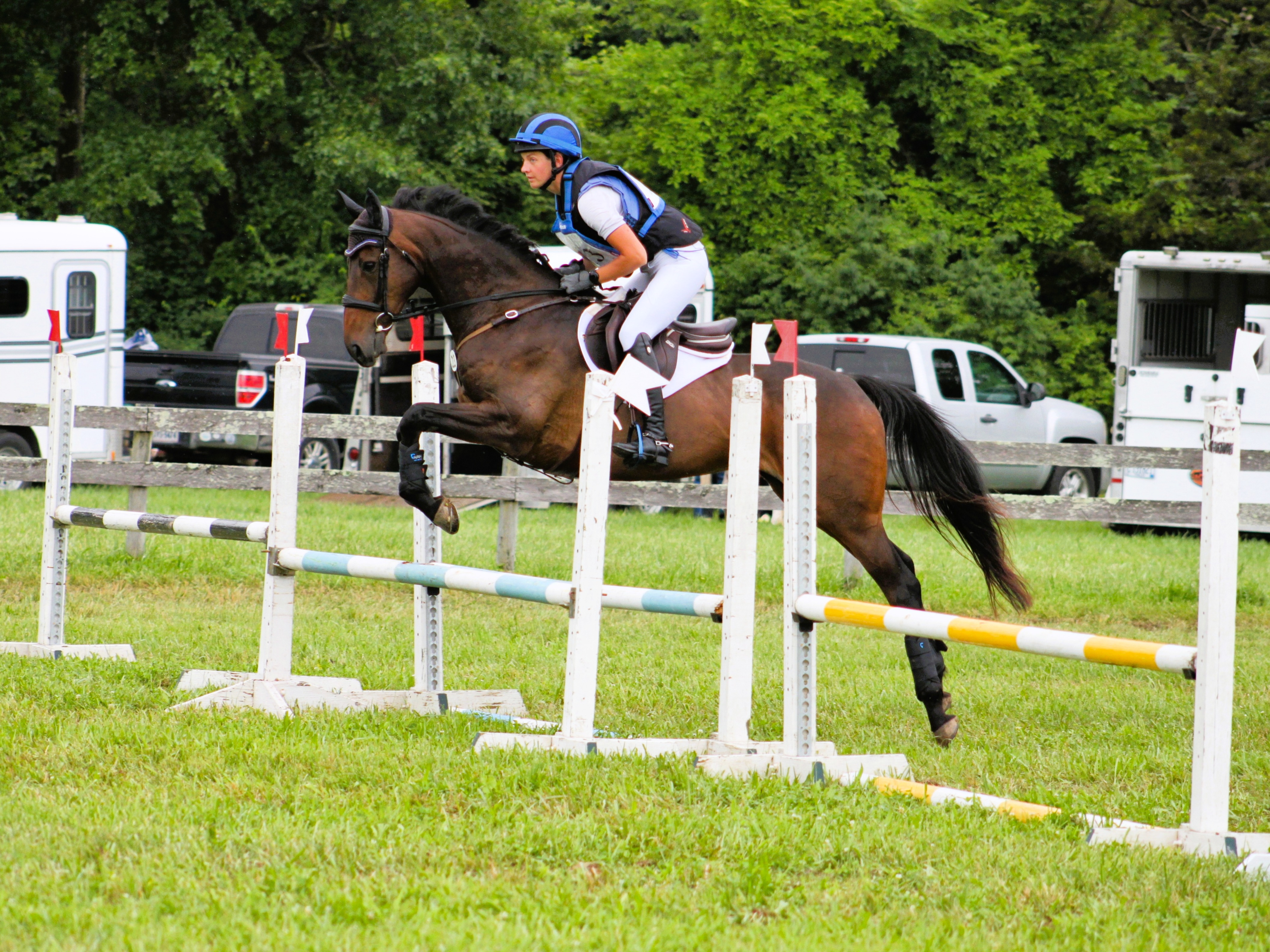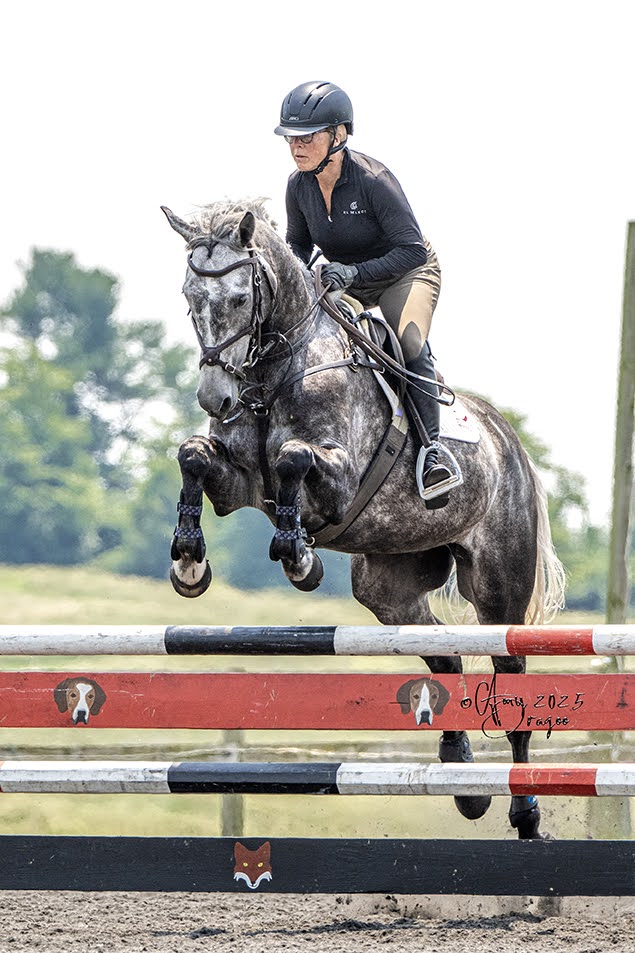This year at the postponed 2020 Olympic Games, we’ll see some major format changes at play on the international stage. What lies in store, and what does it mean for our sport? Lynne Kaye discusses the topic in a two-part series that was originally published on EN in 2018. If you missed Part I, read it here.

Photo via Wikimedia Commons.
In 2018, the FEI released and began testing its new competition format for the 2020 Tokyo Olympics. In the midst of preparing for the 2018 World Equestrian Games, the FEI’s activities barely made a blip on the radar screen. Once the Games had concluded, it was full steam ahead to test the new formatting in earnest.
The new format allows more nations to qualify eventing teams through regional championships such as the Pan Am Games as well as through the Nations Cup Final. With Japan, Australia and New Zealand already qualified through WEG, more nations from Asia/Oceania are likely to participate in the Tokyo Olympics which should please the IOC (Editor’s Note: China and Thailand will field eventing teams for the first time this year).
The new format also helps national teams stay in the competition. Unless a team rider is cited for a major violation like dangerous riding, the new format helps teams make it through to show jumping. Hopefully, that will encourage more cross country fans to watch show jumping. Unfortunately, when the FEI went to three-rider teams, they added a format for substitution and scoring that adds a significant amount of complexity to team composition and scoring, making the sport harder to understand. Last, and most importantly, the new format tries to fix dressage through addition by subtraction and does little to make dressage phase more attractive to the audience or broadcasters.
The FEI has quite a bit of time to fix the issues with the new Olympic format, and other Olympic sports can serve as models for broadening equestrian’s appeal. Figure skating provides a particularly apt model. Figure skating changed its format to overcome its reputation as too technical to be interesting to the general public, too confusing to score and too difficult to broadcast. Thanks to its successful format changes, Olympic figure skating is now so popular that during this year’s Winter Olympics it received 12 nights of prime time coverage and its own nightly talk show. Figure skating also had a full complement of online and social media coverage during the 2018 Olympics.
When figure skating was receiving similar criticisms to equestrian, the first phase of Olympic figure skating competitions was quite similar to the dressage phase of eventing. Every skater performed the identical prescribed test, making the phase purely a test of technical skill. The performances were too similar, which made watching them boring. Even avid fans came and went to catch their favorite skaters just as eventing dressage fans do today.

Photo via Wikimedia Commons.
The characteristics that made one figure skating performance better than another were often difficult for the casual audience to discern, especially if they were spectators in the arena. The casual TV audience was only a bit better off. Broadcasters were challenged to communicate the differences between competitors without resorting to the sport’s technical jargon which went over the audience’s head. As a result, broadcasters rarely did more than show highlights of the first phase at the beginning of other broadcasts.
Figure skating competitions concluded with the “free skate,” a phase that was much more popular than the opening round(s). In the “free skate” competitors executed a set of required skills within their own choreography and choice of music. Skaters were also permitted to coordinate their wardrobe with their music and performance. The free skate was popular with diehard fans, the casual audience and broadcasters because every performance was different and each competitor had a way to showcase their unique talents and personality.
Figure skating’s scoring issue was the byproduct of lack of interest in the opening phase of the competition. Much of the casual audience joined the competition at some point during the free skate since broadcasters provided minimal to no coverage of the first phase and corporations who wanted to impress their clients brought them to the free skate. That meant the casual audience missed watching the figure skating equivalent of eventing’s dressage divas — skaters that were outstanding at the technical elements of the first phase.
These skaters sometimes entered the free skate with a sizeable cushion over the rest of the field just as eventing dressage divas sometimes enter cross country with a sizeable lead over the rest of the field. With a sizeable lead, the technically proficient skaters sometimes played it safe in their free skates to ensure they would end up on the podium rather than taking the chance of making a major mistake and sliding way down the leaderboard. In other words, they used the same strategy an eventer with a sizeable cushion does if they take a long route to help ensure they complete the cross country. In contrast, skaters with lower placings often went for broke in their programs in the same way a rider down the leaderboard after dressage takes a difficult short route or rides to be inside the time on cross country.
The skaters’ competition strategies confused the casual audience because it meant that best free skate did not win the overall competition. Since the casual audience only saw the free skate they left confused or thinking the judging was bad or that judges were biased in favor of certain countries.

Photo via Wikimedia Commons.
Whether by luck or skill, figure skating responded to the criticisms that it was too technical, too confusing to score and too difficult to broadcast by introducing a new phase — the “short” program — a shorter version of its already popular free skate. The short program tested the sport’s most important technical elements within a competitor’s own choreography and music. Just as in the free skate, competitors selected their own wardrobe to complement the choreography and music.
The short program was a hit with both knowledgeable and casual audiences because every performance was different. The casual audience responded to competitors based on their personality which came through in their choreography, music and wardrobe selection. The variety in performances also kept knowledgeable audiences in their seats. Most importantly, the more diverse format gave broadcasters a way to connect with the general audience while still discussing the fine details that distinguished one world class competitor from another. Combining the short program with the free skate made the sport diverse enough to attract the general audience and broadcasters. It also went a long way toward fixing the confusing scoring by involving the casual audience in the competition prior to the free skate.
The other change figure skating made to improve scoring for the casual audience was to make the free skate worth a higher percentage of the total score. That way, the winner of the free skate was more often also the winner of the overall competition.

Photo via Flickr/Queen Yuna.
The larger audience and greater broadcast exposure put figure skating on an upward spiral. Bigger audiences meant more media coverage which meant more corporate sponsors, which in turn gave the sport the resources to attract bigger audiences, media coverage and sponsors. Demand for Olympic figure skating is now so strong that the sport added a team competition for the 2018 Winter Olympics.
Based on figure skating’s experience, it seems that the FEI’s format changes would best match its goals if they focused on increasing the popularity of dressage. Figure skating found that making the competition more diverse was the ticket to increased popularity. Once the popularity problem was solved, scoring was a fairly easy fix.
One way to make dressage more diverse would be to allow eventers to create their own dressage pattern covering the key technical elements contained in the current tests. From a Dressage Today interview with FEI judges Axel Steiner and Anne Gribbons: “Musical freestyle has increased the popularity of [dressage], drawing spectators, advertisers and even television broadcasts. In fact, freestyle is one of the reasons dressage is still in the Olympic Games. To keep the entertainment value high, it is important to allow for creativity among the competitors and keep the freestyle creatively free. At the same time we must stay true to the technical qualities of dressage.”
Giving event riders the freedom to design their own dressage pattern would mean every dressage ride would be different, and that riders could showcase their horse’s own unique talents (and help hide their flaws). Setting the pattern to music and giving riders the freedom to ride in their personal cross country colors rather than a team uniform that looks like every other country’s team uniform would help even more, although that may be a bit radical for 2020.
——–
About the author: In addition to being a long-time Eventing fan and amateur rider, Lynne is a sustainability consultant with Unison Advisory Group. She helps clients grow credibility and trust with important stakeholders through more thoughtful engagement, stronger environmental stewardship and higher quality business practices. She holds a Master’s in Sustainability from Harvard and an MBA from Duke. She had a brief career as a professional ice skater and is still a fan of the sport.








































